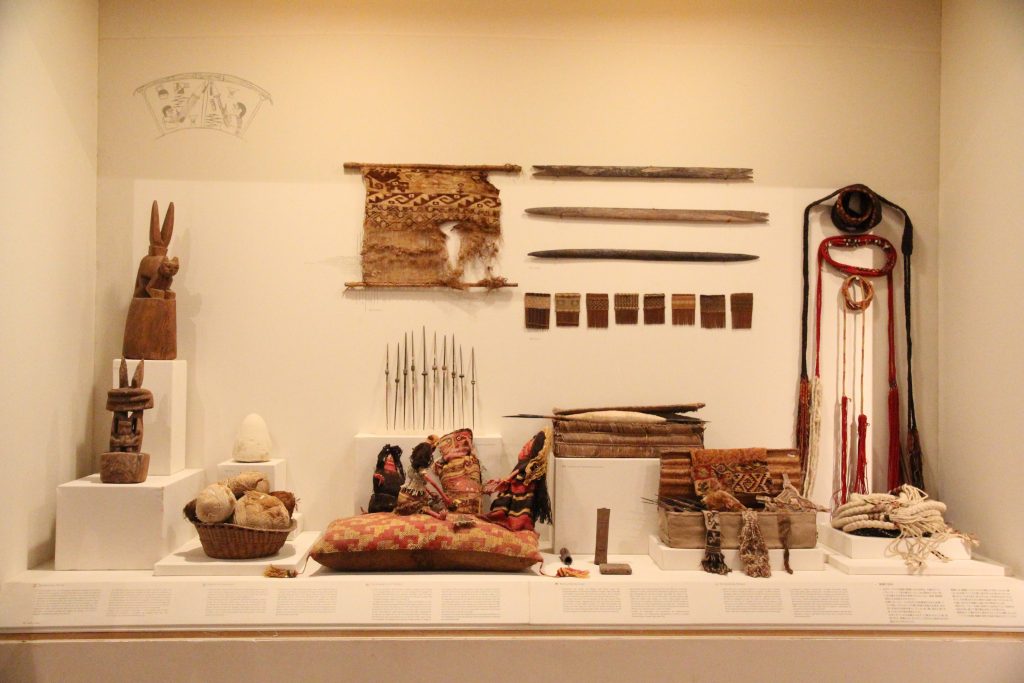Textile Technology
Room 5, Vitrine 54
Wood, textile, stone, metal, bone
ML100978, ML100979, ML301340, ML301341, ML400696- ML400698, ML400705-ML400707, ML400709-ML400713, ML400735-ML400738, ML400753, ML400754, ML400763-ML400789, ML400791-ML400795, ML400797-ML400830, ML400832-ML400858, ML400865-ML400869, ML400881, ML400882, ML500084, ML600014-ML600023, ML600039, ML600042, ML600043, ML600053, ML600055, ML600056, ML600058, ML600074, ML600081-ML600093, ML600095-ML600098.
In ancient Peru the principal materials used for spinning and weaving were cotton and alpaca and llama wool. They were employed in a number of natural colors, from white to brown, and they were also dyed using mineral, vegetable or animal pigments. (1)
In the spinning process a spindle was used that included a feature known as a piruro (2), which was a kind of counterweight that facilitated the rotation of the spindle and the tightening of the thread. During this task the spinners used talcum powder on their fingers (3). The threads were removed from the spindle and rolled into balls which could then be dyed. The balls or skeins were then ready to be woven (1).
Backstrap (4) or fixed horizontal looms were used. With the help of a shuttle, the threads were passed through the warp (5) to form the weft (6). Using a batten (7), the weaver pressed down on the thread, tightening it firmly. The combs (8) helped the weaver to organize the threads during the weaving process. Fine needles were used to join the panels and embroider designs on the cloth (9). In many parts of present-day Peru, particularly on the northern coast and in the highlands, women continue to use these ancestral weaving techniques.
Baskets which contained materials and tools that would have been used by the spinners and weavers of ancient Peru have been found in pre-Colombian tombs (10).
